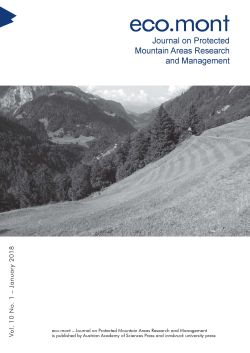
Eco.mont Vol. 10 Nr. 1, pp. 5-14, 2018/01/09
Journal on Protected Mountain Areas Research and Management

Many societies are faced with a growing prevalence of poor health because of stress and sedentary lifestyles. Natural and semi-natural landscapes are increasingly seen as restorative settings, compensating for negative psycho-physiological effects on humans. The extent of these positive effects, however, may depend on the landscape’s degree of naturalness and perceptions of biodiversity, scenic beauty and restorativeness. We assessed the perceived health benefits for 22 participants (age M = 27 years) who twice visited a managed and an abandoned meadow in the Austrian Großes Walsertal Biosphere Reserve. This study found that perceived health benefits did not differ between the managed and unmanaged meadows; participants reported a positive effect of their stays in both meadows on attention restoration, stress reduction and well-being. However, differences between the meadow types did emerge in terms of perceptions of their naturalness and biodiversity, and of perceptions of them as restorative places. Potentially, these restorative benefits can be used for new health-related offers for visitors to mountain biosphere reserves.
Keywords: biodiversity, naturalness, protected area, restorativeness, scenic beauty